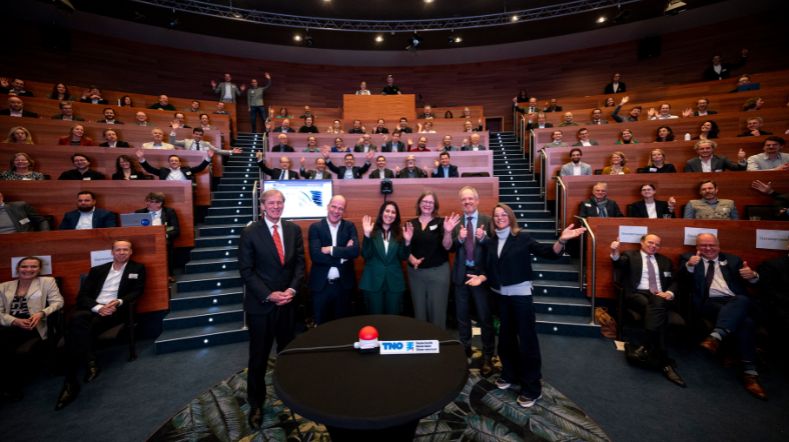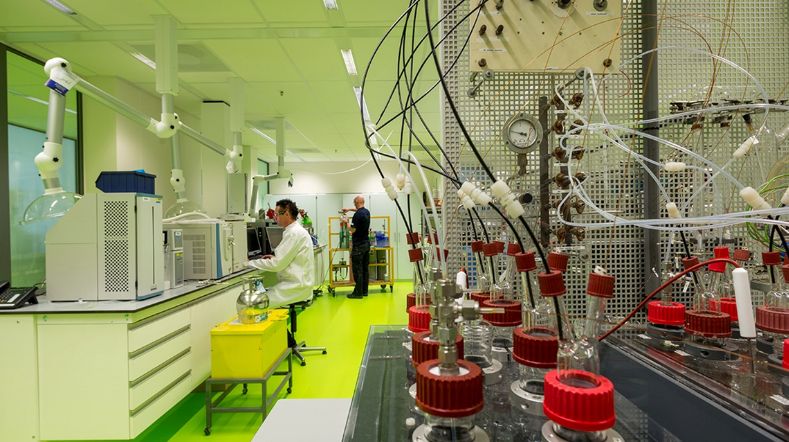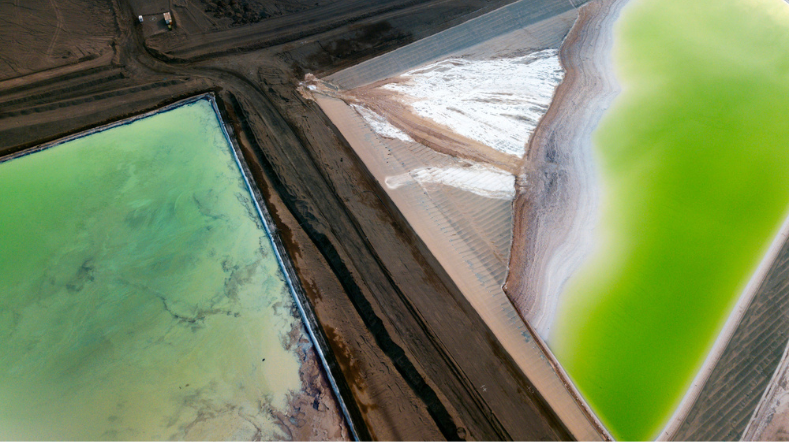
Circular construction & infrastructure
Construction is one of the most important transition areas on the road to a carbon-neutral and circular economy in 2050. We support and advise the government and business in this area by developing and implementing models and sustainability tools. Find out more about what we’re doing to achieve climate-neutral, circular construction and infrastructure.
The Netherlands to be circular by 2050
The Dutch government’s ambition is to cut greenhouse gas emissions by 49% by 2030 compared to 1990. And it aims for a 95% reduction by 2050. In ‘Circular Netherlands by 2050’, the government outlines how we intend to transform our economy to make it sustainably driven and fully circular. To achieve this, we must take action and set milestones at all levels of our society. The intermediate target is ambitious, but not unachievable: 50% less consumption of primary raw materials (mineral, fossil, and metals) by 2030. This goal is in line with the level of ambition in comparable countries.
Sustainable and circular construction economy
How can life cycle assessment (LCA) and related tools (MPG, EQI) optimally contribute to a sustainable and circular construction economy? This is what we are investigating in a more methodical line of research:
- Recently, we led an investigation into module D in the Dutch Determination Method. This is a part of the life cycle analysis (LCA), which includes the gains and losses of recycling and reuse. In the Netherlands, this module is included in the environmental cost indicator (MKI) and the environmental performance of buildings (MPG). In the report we make recommendations to identify this module separately and determine it more explicitly.
- We are working to expand and complement the National Environmental Database with circular and bio-based materials.
- We are working to improve the quality of environmental data, including fuels.
- We are drafter of the Product Category Rules (PCR) of asphalt. This is a set of agreements and calculation rules to determine the MKI of asphalt.
Innovative solutions
How can we replace 10 to 20% of the building materials we use with recycled materials within a few years? And how do we simultaneously achieve a 30% cut in CO2 by reducing the demand for new materials by 80%? Together with public authorities and industry, we’re committed to circular construction. We contribute to the circular approach in various ways. In sustainable projects for public and private construction and infrastructure:
- we assess innovations
- we show where opportunities are to be found
- we identify the possibilities for recycling, service life extension, and circular design
- we devise innovative solutions for an ecosystem of sustainable materials and technologies with a reduced environmental impact
Circular construction materials
We also do research on biobased materials. What are the potential benefits of increasing the use of these materials? And what is the valuation of this added use in the environmental performance of structures? The production of biobased materials is characterised by low CO2 emissions on the one hand and the possibility of CO2 storage on the other. Biobased raw materials can replace finite fossil materials. They are therefore also relevant to the circular economy.
Models and instruments
We work closely with the business community and other research institutes on developing tools and models. For example, we developed the BoB model. We’re also currently developing a tool to express the value of circular use in euros: the Residual Value Calculator (RVC).
We’re facing the social challenge of drastically reducing the burden of construction on our planet. In addition to reducing material use, extending service life, and bio-based solutions, this calls for circular construction with more reuse of materials, raw or otherwise. However, we don’t know exactly which materials are located where and whether they’re suitable for reuse. We developed the BoB model to give advice on circular building materials in the Netherlands. BoB stands for Building Materials in View (Bouwmaterialen in Beeld). It’s a database that provides insight into the materials in the built environment of the Netherlands. This enables them to be reused in circular construction projects, for example.
Rough material passport
The BoB model is based on public databases and building profiles developed by us. It’s a rough material passport of the built environment of the Netherlands, with the theoretical supply and demand of building materials. BoB provides insight into the possibilities for reuse, especially for public authorities, by adding facts such as quality, residual value, environmental impact, and logistical implications. By exchanging data with partners, we accelerate the development of precise material passports, generating the insight needed for truly smart reuse.
Supply and demand of building materials
BoB is therefore a model to predict supply and demand for building materials. The outcomes of this model provide an estimate of volumes of materials to be made available during transformations of urban areas based on building profiles. This therefore concerns the supply side for the coming decades. The future projections (in collaboration with EIB) for new construction for the coming decades predict the demand side of building materials.
A match between supply and demand
Bringing supply and demand together creates a picture of where, when, what, and how many building materials will become available from demolition and needed for new construction. The question then arises as to how we organise the match between supply and demand in practice:
- When and where can imbalance occur between the supply and demand of wood, concrete, steel, etc.? How can we address this imbalance?
- When and where does the need arise for storage locations for secondary materials? And what materials?
- What impact do new material management systems have on the transport sector and therefore on costs and air quality?
An example: Amsterdam Metropolitan Area
In the Amsterdam metropolitan area, we conducted a quick scan into the effect of circular construction on logistic flows and space usage, in collaboration with the Economic Institute for Construction (EIB). Over the next 20 years, 250,000 homes and a large number of utility buildings will be built there, including construction, reconstruction, and replacement of infrastructure. The quick scan showed that a maximum of one quarter of the large number of new homes could be built in a circular way by using recycled materials.
The built environment is responsible for half of all materials used in the Netherlands, and approximately 25 megatons of waste are produced in the construction and demolition sector every year. If we want to reduce our ecological footprint, we need to think more about raw materials, scarcity, and limiting demand. And we must keep products in circulation longer. The Residual Value Calculator is a calculation model that gives insight into the financial residual value of building products and elements, such as the inner and outer walls of homes and offices. We developed this model together with C2C Expolab.
Loss of added value
We’re used to depreciating to a minimum value or to 0 over the service life of homes and offices. However, building components such as interior walls represent a residual value at the end of their service life that’s higher than the return on the materials alone. In addition to a quantity of wood or concrete, for example, the product also contains craftsmanship and technology that together represent a certain value. Destroying the product leads to the loss of that added value.
Sustainable use of materials
Take a wooden interior wall, for example. It lasts a long time, but its function changes regularly due to staff increases and/or the creation of open-plan offices. If the owner decides to demolish the wall and turn it into wood chips for the chipboard industry, only the raw materials remain, and the added value is often lost. But suppose the proprietor dismantles the interior walls as elements, gives them a new coat of paint, and reassembles them elsewhere. The product can then be used again for years, and the owner not only contributes to the circular use of materials, but also benefits financially.
Financial and material residual value of construction products
The Residual Value Calculator lets users see at any time what the building products or elements in their property portfolio are still worth. To calculate the residual value after a number of years, the calculation model uses factors such as:
- raw materials price
- quality
- detachability
- transport costs
- maintenance costs
- repair costs
Don’t demolish, but dismantle
Once suppliers of construction products, property developers, housing corporations, and financiers of construction projects know the financial residual value of construction materials, there is an incentive for them to dismantle rather than demolish at the end of the service life. The prototype of the Residual Value Calculator was developed on the basis of interior walls in offices. We’re now working on a prediction model for a larger portfolio of construction products.
Get inspired
Urban mining crucial: more critical and strategic materials from electronics and electrical devices


Prospective Life Cycle Assessments for future-proof product design


Netherlands Materials Observatory (NMO) officially opened


Recovering critical raw materials from LFP Batteries


No energy transition without raw materials transition


